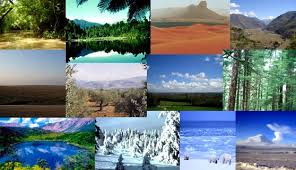Climate zoning Kermanshah, in line with its planned improvements
Keywords:
climate zoning, Demartn, Region, Kermanshah ProvinceAbstract
Climate can be defined as a mean of the different components of the climate system. The climate of the region is composed of all the elements of its climate, and the divisions have all the elements, should be considered. Climatic zonation (ie, recognizing that climate zones are identical ), in order to achieve comprehensive development in various aspects of time - space is necessary and appropriate in order to create a climate that is suitable for homes and buildings. Since the Kermanshah Province, has a lot of potential in terms of nature, in order to develop the region, in the present climate zoning Kermanshah, to develop more of it, especially the manner of its construction, has been adjusted. Therefore, the required data (precipitation and temperature) 11 Climatology and synoptic stations of Kermanshah, the weather will get. Using Demartn model calculations have been carried out, and the software uses GIS, the results were graded in Kermanshah province. The results indicate that a large part of the Kermanshah Province, has formed a cold semi-arid climate, Mediterranean climate, then the range has expanded to be. The next time, the scope is dry. Lowest range belongs to the range is wet in the northwest province.
References
Azizi, G., 2001. Digital classification of selected climate stations in Iran as Littin skiing. Geograph. J., No. 41, 39.
Saligheh, M., Barimani, F., Ismaili Nejad, M., 2008. Climate Zoning province, J. Geograph. Dev., No. 12, 102-101.
Zabolabbasi, F., et al., 2004. Climate classification province, Nivar magazine sites.
Geramimotlagh, A., Shabankari, M., 2006. Climate zoning Bushehr. J. Tehran Univ., No. 20, 187.
Zandi, D., Arabi, S., 2010. Design with Nature ( Niknam rural - Lavasan ). Arch. Build., No. 23-22, Tehran, 49.
Qarehnejad, H., 2002. Man, Nature and Architecture, Kermanshah. publ. Mohammed Gol., 31.
Masoodian, A. 2003. Climatic regions of Iran, J. Geograph., 171.
White, F.J., Perry, A.H., 1989. Classification of the climate of England and Wales based in agroclimatic data. Int. J. climatol., 9, 271.
Poul, A.K., Henri, D., 2002. Grission-Mayer & Peter T. Soul e. Climatic Regionalization and the Spatio-Temporal Occurrence of Extreme Single-year., 216.
Kavachi, T., Maruyama, T., Singh, V.P., 2001. Rainfall entropy for delieation of water resources zones in Japan. J. Hydrol., 246.
Sabeti, H., 1969. climates critical of Iran, Tehran University Press.
Alijani, B., 1996. Iran's climate, Payam Noor University, Tehran.
Soltani, S., saadati., Seyyedeh, S.., 2007. Zoning drought in Kermanshah province, the standardized precipitation index (Spi). Iran. J. Sci. Watershed Eng. First Year., No. 2.
Farajzadeh, M., Aamadabadi, A., 2009. Climate Assessment and Zoning of tourism in Iran, using tourism climate index (Tci). J. Geograph., No. 71.
Khamchin moghadam, S., Hossein, K., Fereidoon., Manshoori, M., 2010. Zoning maximum daily precipitation in Iran. J. Soil Water. Agr.Sci.Technol., Vol 24, No. 1.

Published
How to Cite
Issue
Section
Copyright (c) 2020 H. Yavari, B. Shafiei, M. M. Nasab

This work is licensed under a Creative Commons Attribution-NonCommercial-NoDerivatives 4.0 International License.



